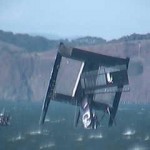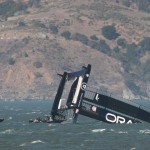Word on the internet is that the oracle 72 foot multihull has capsized. Damage to the wing. Should we be surprised?
This event coupled with Coutts remarks a few days ago:
Yachting: Coutts admits big cat a mistake
5:30 AM Saturday Oct 6, 2012
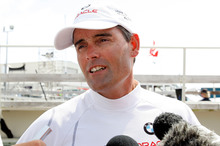
Coutts conceded if he had his time again he would have gone with a less ambitious design. Photo / NZPA
America’s Cup heavyweights at odds as tension hits boiling point
Russell Coutts, the mastermind behind the format for next year’s America’s Cup, has admitted he made a mistake with the AC72 class rule and revealed he even tried to scale back the size of the boat late last year.
The Oracle chief executive claims his efforts to revise the design of the wingsail catamarans when it became apparent other teams were struggling with the costs and complexity of the project were blocked by Team New Zealand counterpart Grant Dalton.
But, in what is sure to bring simmering tensions between the two teams to boiling point, Dalton has fired back at Coutts, accusing the four-time Cup winner of trying to “spin his way out of trouble”.
Under the original plans for the 34th America’s Cup unveiled in September 2010, competitors were supposed to be racing their AC72s in this week’s world series regatta in San Francisco.
But with just three challengers confirmed for the Cup next year, and only one of them – Team New Zealand – having got their boat wet yet, the remaining regattas on the circuit will be sailed in the AC45s.
The design and construction process of the high-tech wing-sailed catamarans has been far more time consuming and complex than anticipated. Artemis’ AC72 programme has been fraught with problems, while Oracle suffered major damage to their daggerboards shortly after they launched their boat, behind schedule, in late August.
In an interview with the Weekend Herald at Oracle’s base on the outskirts of San Francisco, Coutts conceded if he had his time again he would have gone with a less ambitious design.
“In hindsight, I think there were two errors. One was I thought the boats needed to be quite large-scale to be grand enough for the America’s Cup. Clearly the world series has proven this wrong – the AC45s look pretty damn good on TV,” he said.
“The other thing is, we possibly should have looked at making more of the components one-design.”
Coutts said he broached the topic of moving to a smaller scale boat at a competitors meeting in San Diego in November last year, but the idea was immediately rejected by Dalton.
“Quite a few of the teams were in favour of this, particularly the ones that were struggling financially. Do you know who opposed that? Team New Zealand. And now they’re complaining about how difficult it is.”
But Dalton has rejected Coutts’ account of events, and believes the Oracle chief executive is trying to use Team New Zealand as a scapegoat for his own poor planning.
“(The proposal to change the class rule) was nothing more than a statement made at a closed meeting so that one day when the wheels start falling off he can use it as an excuse,” said Dalton.
“He was proposing that we all scrap three well-advanced boats, and start again.
“It is one of the biggest concessions of defeat I’ve ever heard.”
Coutts asserts when the idea was tabled no team had begun building their AC72s, but Dalton denies this.
“At that point our boat was three-quarters built. His boat and Artemis were well in build. Deals were done.
“And what would that have meant (if we did agree to change the class rule)? That all these other teams were suddenly going to stump up the money?
“They can barely even start an AC45.”
With this latest spat following a stand-off between Team New Zealand and America’s Cup event organisers this week over a decision to abandon development of the team bases on piers 30-32, it appears the rare period of peace in the sport is coming to an end.
Dalton said he was becoming frustrated at the continual back-tracking from the event’s organisers.
“There are a chain of things that aren’t being produced as promised.”
Coutts, meanwhile, suggests Dalton “is only happy if he’s having a grumble about something”.

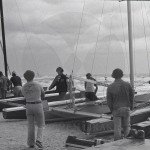
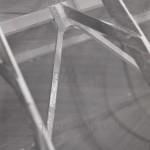

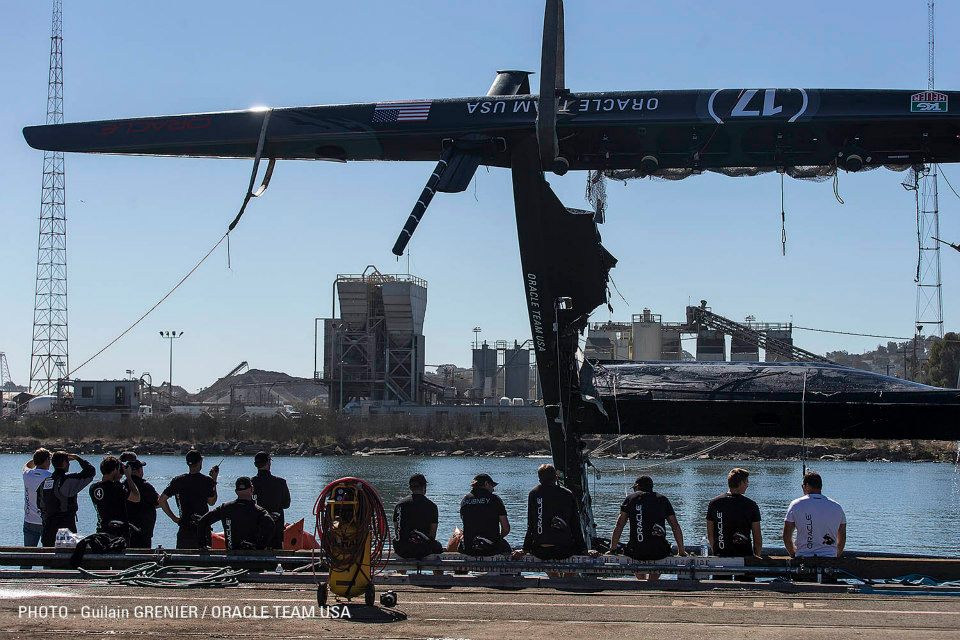












 Comments (0)
Comments (0)
 Printable Version
Printable Version Email This
Email This Font
Font